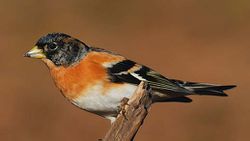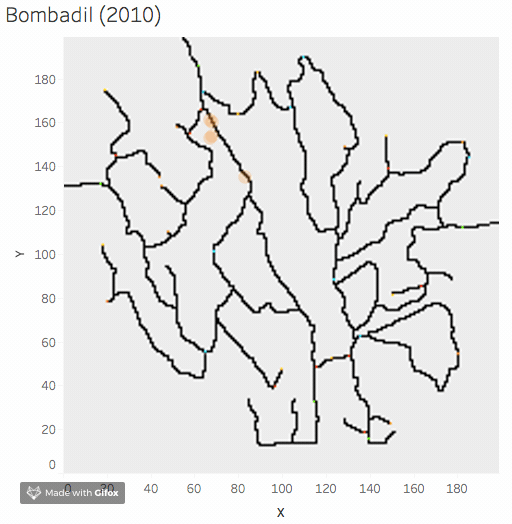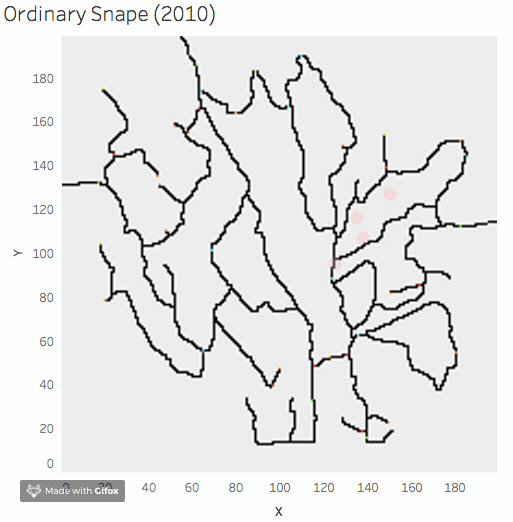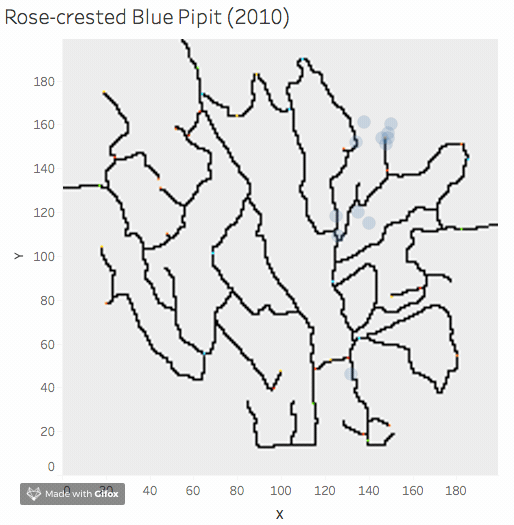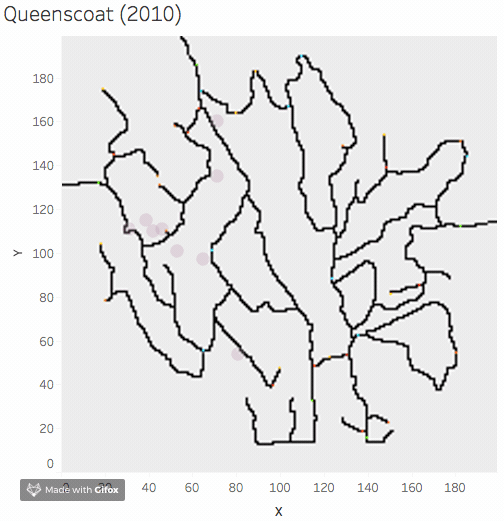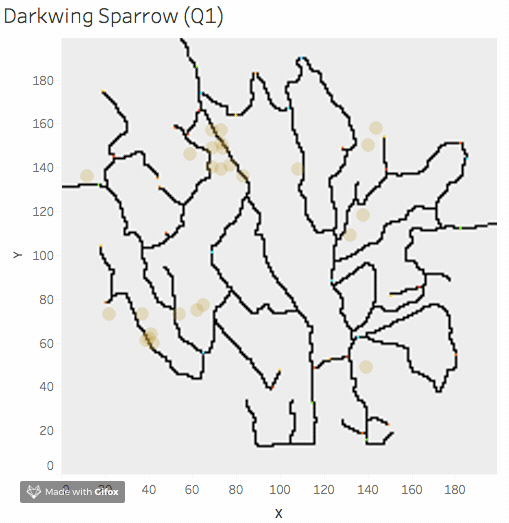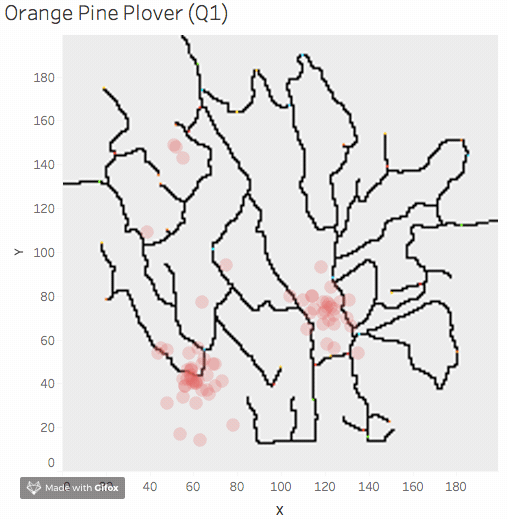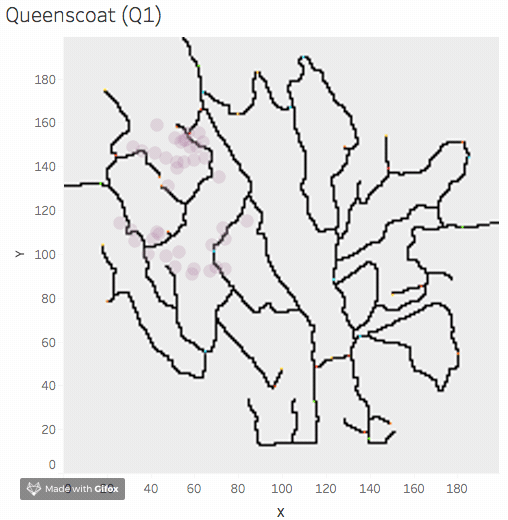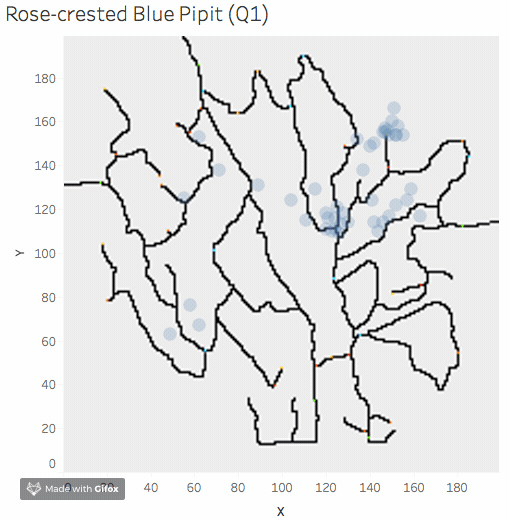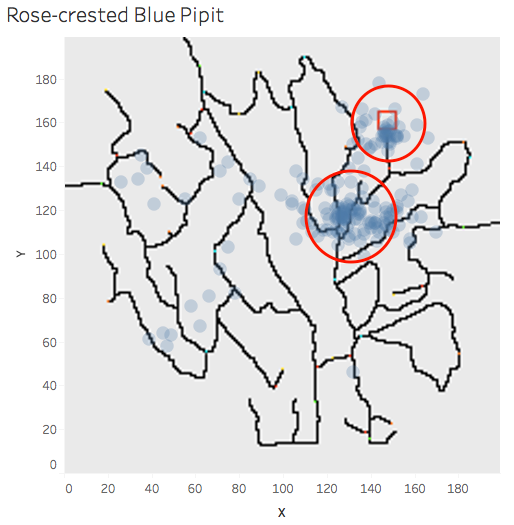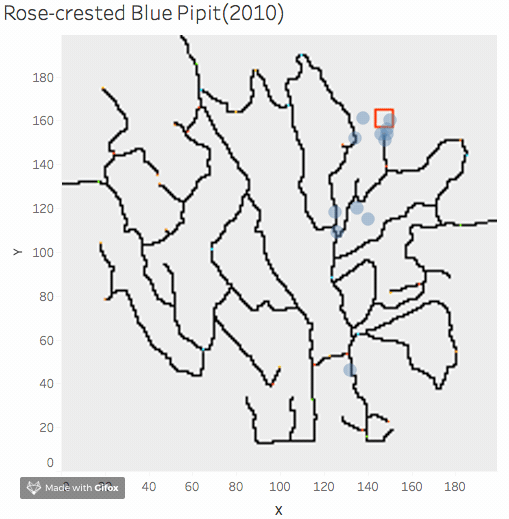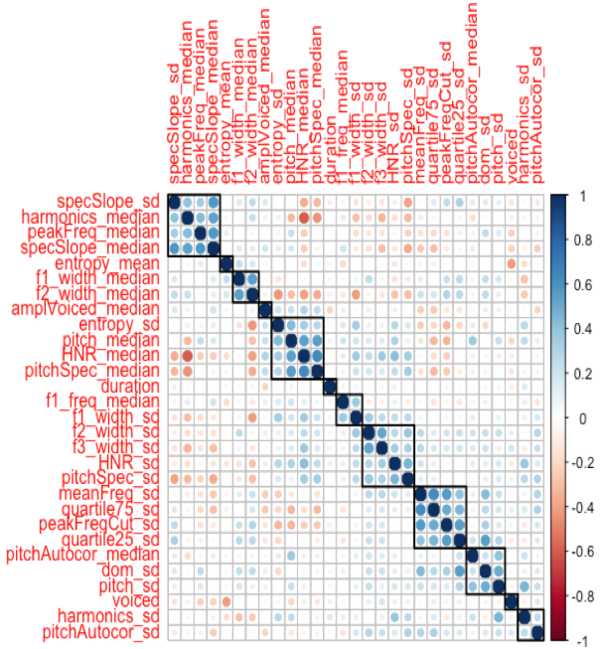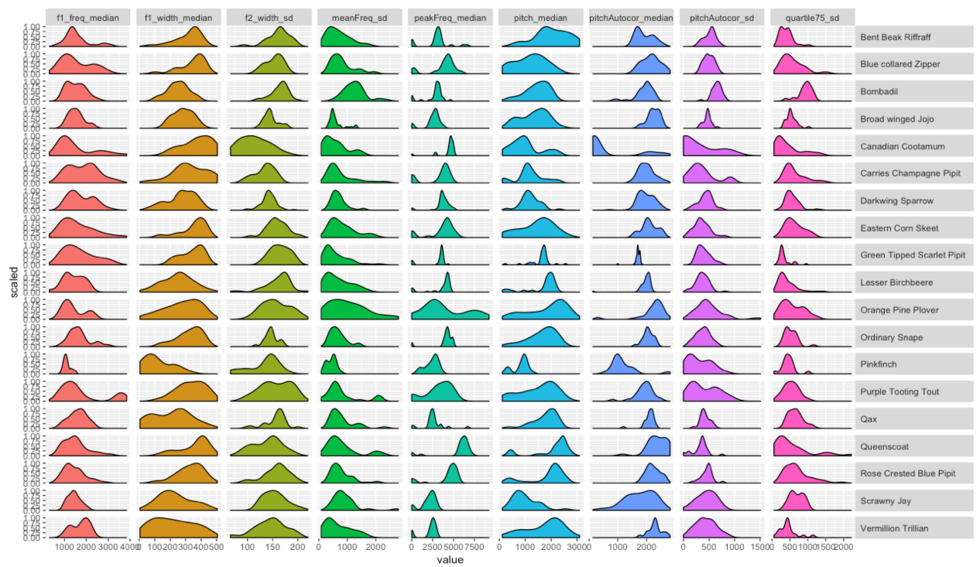Difference between revisions of "ISSS608 2017-18 T3 Assign Wang Runyu Data Visualization"
| Line 70: | Line 70: | ||
[[File:Pattern ds rose hist.gif|none]] | [[File:Pattern ds rose hist.gif|none]] | ||
| − | ==Question 2== | + | ==Question 2 Bird call classification== |
===Visual Analytical Approach=== | ===Visual Analytical Approach=== | ||
=====Remove Highly Correlated Features===== | =====Remove Highly Correlated Features===== | ||
Revision as of 18:48, 8 July 2018
|
|
|
|
|
Question 1: Patterns of all of the bird species
Overview Patterns
The plot below indicates the birds location of all the species. The darker color indicated more appearances are recorded at the same location. All species spread over the entire preserve. Most of birds form their own society. They likely to live together as a community.
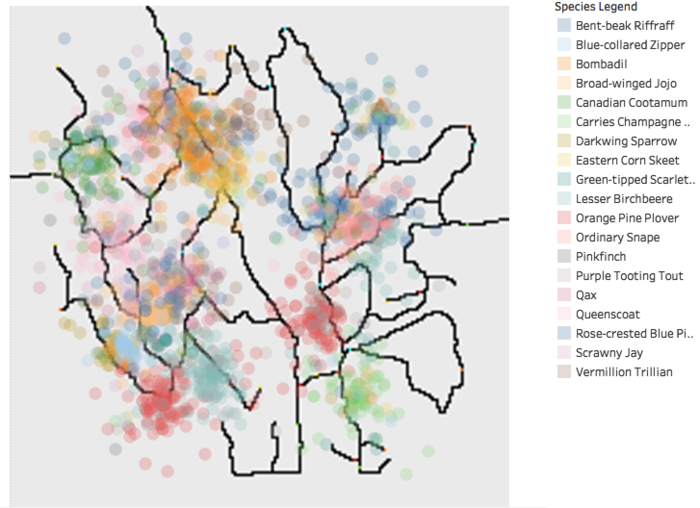
To confirm the pattern for every bird species, plot the graph and observe the location. Below are some examples.
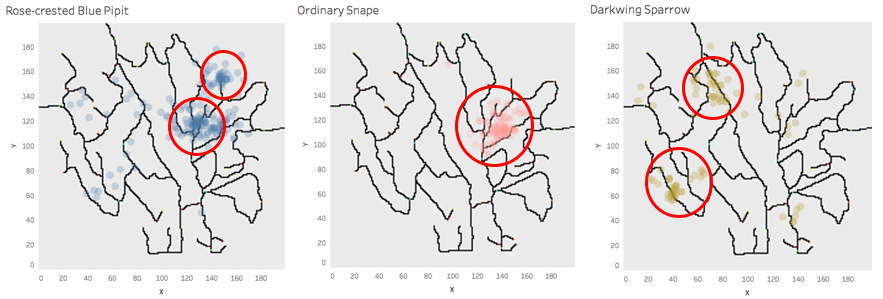
Form the pattern, we can find that all the birds species intend to live together. Some are living closer and some bird community are more widely spread.
Pattern over the years
The are graph shows that there is no significant number of audio recording provided before 2010. We can interpret meaningful result from insufficient data. So in this assignment, we will only take the audio recording from 2010 onward into consideration.

From 2010 to 2018, we can find most of the birds, expect rose pipit are living in the same region over the years. The rose pipit community are moving to the bottom of the map.
Below are four examples: Bombadli, Ordinary Shape, Rose Pipit, Queenscoa.
Pattern of Different Quarters
Among four quarters, by looking through all the species, we can see that birds are more active during in quarter 2, and less active during quarter 1, 3 and 4. That is likely due to seasonal migration. Below are four examples: Darkwing Sparrow, Orange Pine Plover, Queenscoat, Rose-crested Blue Pipit.
Pattern Around Dumping Site
We study the possible pattern difference caused by dumping site. By going through all the bird species, we can see only rose pipit community is overlay with the dumping site. The red triangle represents dumping site and the red color circle represents the two rose pipit community.
We further investigate the each single year. From 2010 to 2014, we can see that rose pipit forms community besides dumping site. however after 2015, we can not find rose pipits near dumping site at all.
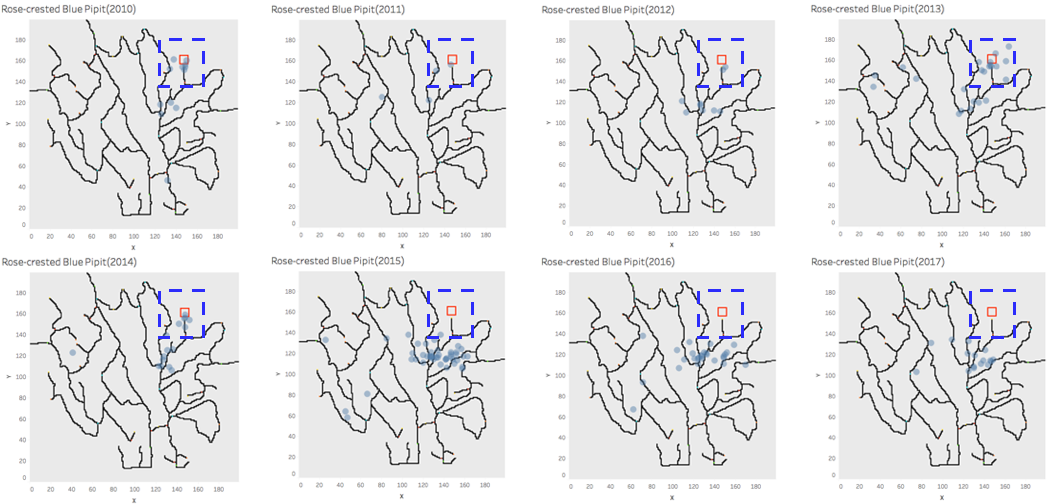
Below animation below concludes the movement of rose pipit from 2010 to 2017. The change before and after 2015 may indicate that rose pipit is affected by the dumping site. And it also suggest that the dumping site starts its operation in 2015.
Question 2 Bird call classification
Visual Analytical Approach
As the text format outcome from seewave package(analyzeFolder function) contains 69 features, it is not practical for us to analyze all the features visually. In the first step, I use findCorrelation() function to eliminate highly correlated features. I set the pair-wise absolute correlation cut off to 0.6.
Correlation Plot
Further more, we are going to remove highly correlated features based on observations from corrplot.
Corrplot, select variables, we not only consider to check the variables nearby, but all the variables For example, group of 'specSlape_sd', 'harmonics_median', 'peakFreq_median', I choose 'peakFreq_median'.
